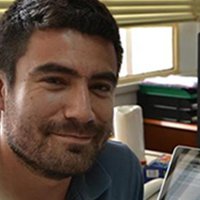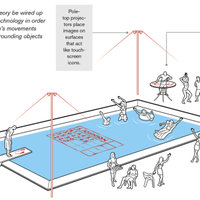"In the laboratories of Libelium, a Spanish wireless communications company, a group of engineers is working against the clock, welding by hand a shipment of radiation sensors headed for Japan. In March 2011, the Fukushima plant sounded its alarms in the aftermath of a 9.0 magnitude earthquake and a catastrophic tsunami that caused a nuclear meltdown and radiation leaks at the plant. Local food and water supplies were contaminated, and the “no-go” zone, where radiation levels were dangerously high, extended 20-kilometers away from the plant.
Libelium’s sensors make it possible to create, in just a few hours, an exact map of the radiation levels in the impacted area. Back in the lab, David Gascón, the young engineer responsible for these sensors, has ordered their emergency assembly and delivery to Fukushima as soon as possible.
“They fit in the palm of your hand and at the same time that they record data, they can send it through 3G to a cloud computing system, along with GPS information,” the TR35 winner explains. Gascón adds that this prototype was one tenth the price of other radiation monitors on the market when they were sent in aid of Japan.
This young engineer cofounded Libelium in 2006 with Alicia Asín in association with the University of Zaragoza. The company’s intelligent sensor platforms are composed of open-code software and are known for their robustness, their ability to easily incorporate tens of different sensors, and their ability to operate over long distances. They can be used for a variety of functions; anything from detecting fires or monitoring crops, to evaluating air quality, measuring water consumption, or creating parking systems that let the driver know when spaces become available.
The key module behind all of this technology is the Waspmote; an electronic component weighing only 20 grams. A group of Waspmotes with different configurations, and reinforced with different sensors, creates an intelligent network capable of transmitting information regarding any type of physical environment to a local server or the Internet. It could be a forest, mountains, or a security zone surrounding a nuclear facility.
Gascón, who considers his platforms to be “a disruptive innovation with broad uses”, sums it up by saying: “We’ve extended the limits of the network, helping create the concept of the Internet of Things.”
It is no surprise then, that this technology has expanded to more than 45 countries. In northern Spain, 90 Waspmotes were distributed across 200 hectares of forest in Asturias and Galicia in 2010, where they served as fire prevention tools. They measure the temperature and the humidity, and detect the presence of gases associated with combustion. That same year, these sensors invented by the TR35 winner were selected by Project SmartSantander to set in motion a system detecting open parking spaces, as well as to measure and control noise and air pollution in Cantabria’s capital."




